| Travel Photos Home Page |
Kowloon, Oct 2018
|
||||
|
To return to the Paintings section of this website, please CLICK HERE
|
|||
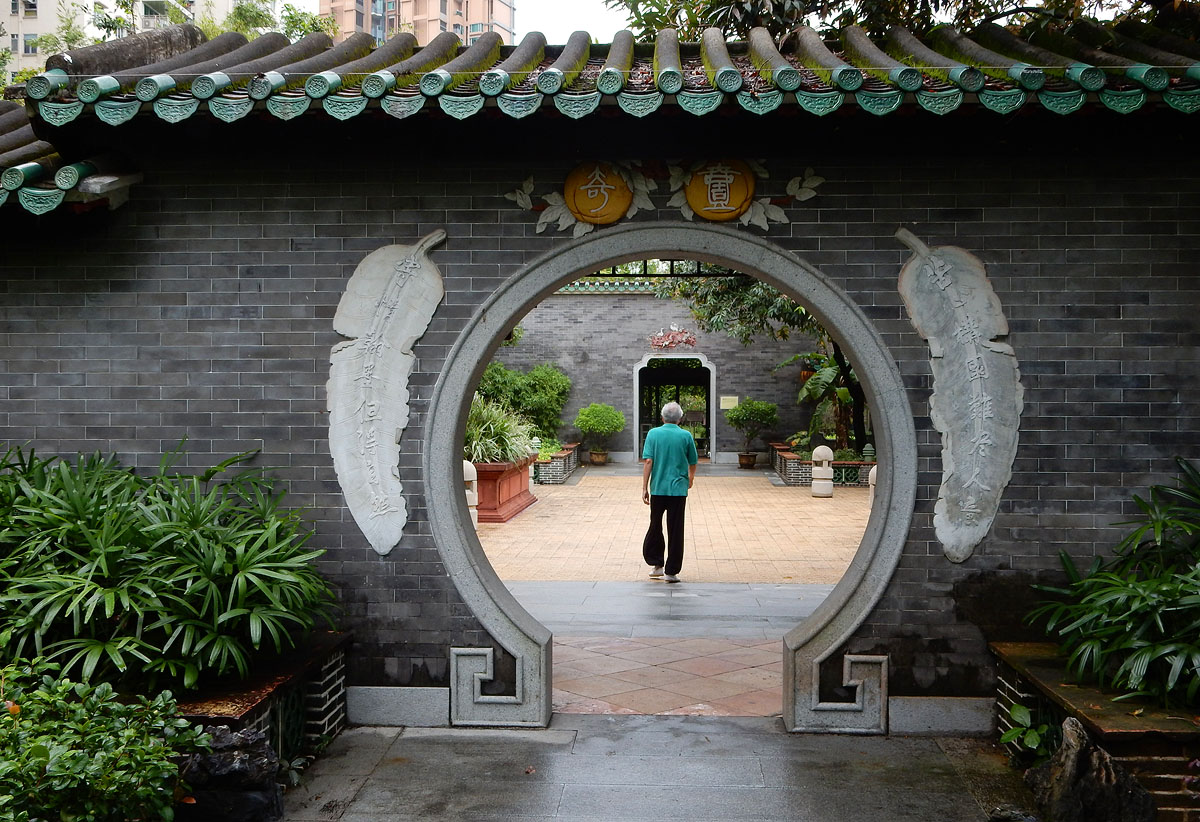 |
|||
| When I was a kid in Hong Kong, way back in the 1940s and early 1950s, we would often go to a place in Kowloon called Lai Chi Kok to swim. Nowadays, that is no longer possible because of massive land reclaimation. Before we wring our hands in regret for swimming bays lost, let us acknowledge that Hong Kong had to keep up with the times and hard choices had to be made.
In my youth, ships used to anchor in the middle of the harbour. Small junks and sampans would sail out to them. Cargo would be winched from the ships to the junks, which would then bring them ashore to be stored in godowns. Then some genius invented the idea of using large containers for carrying cargo. Hong Kong had to find somewhere to house container terminals. Lai Chi Kok was one of the areas where land was reclaimed and container terminals were created. Where I used to swim as a kid there is now a lovely Chinese Garden, built on part of that reclaimed land. It is called the Lingnam Garden. |
|||
 |
|||
| One of the ponds in Lingnam Garden. | |||
 |
||
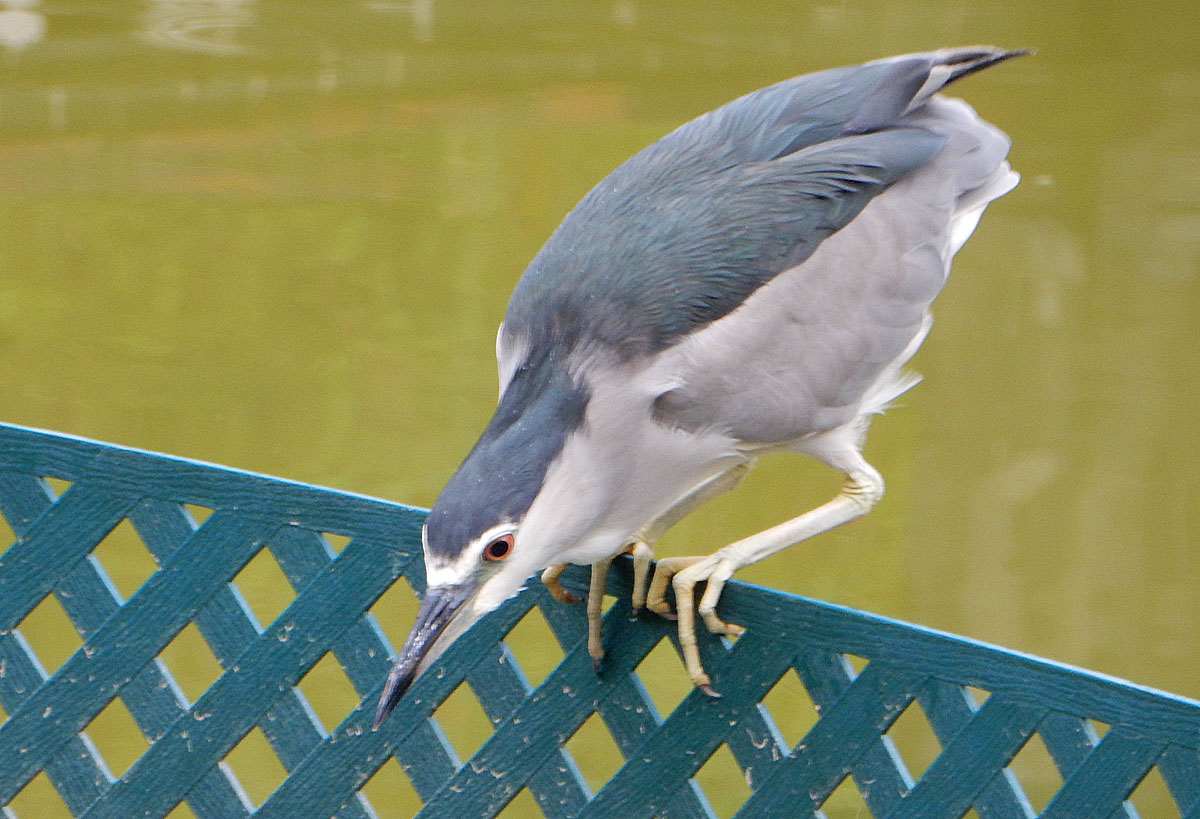 |
|||
| A waterbird, keen to feed on the fish in the pond at the Lingnam Garden. | |||
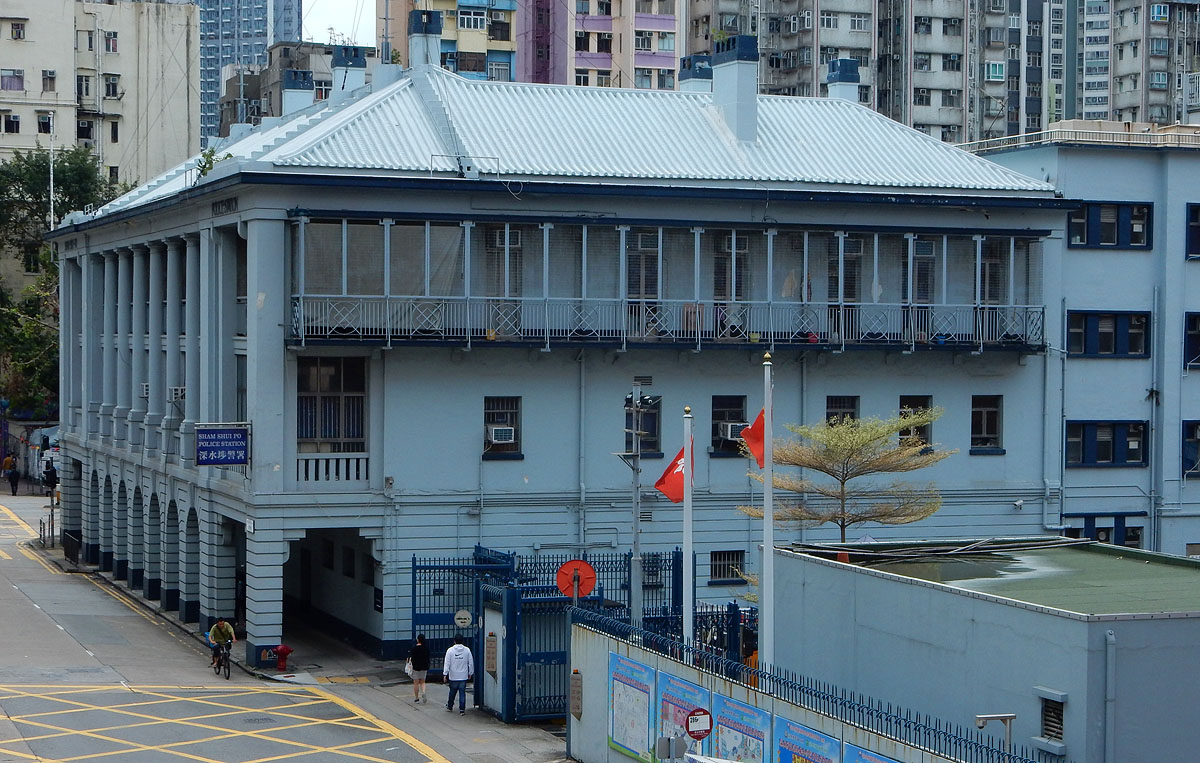 |
|||
| I mentioned in the webpage about Hong Kong Island that the Police Force in Hong Kong has done well to preserve old colonial buildings, as in the case with the old Central Police Compound on Hong Kong Island which has just been opened as a great new tourist attraction.
The photo above shows the old Sham Shui Po Police Station in Kowloon which is still in active service. |
|||
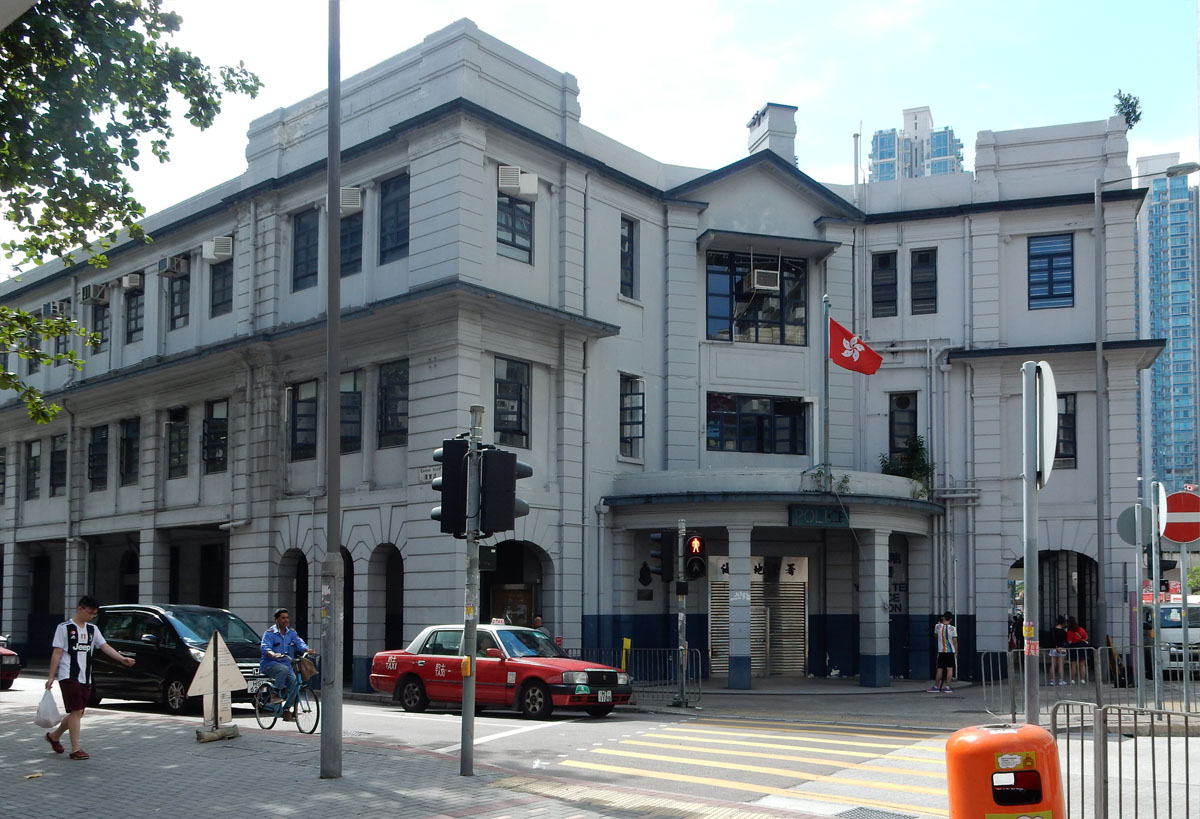 |
|||
| This is the active Police Station in Yau Ma Tei in Kowloon. | |||
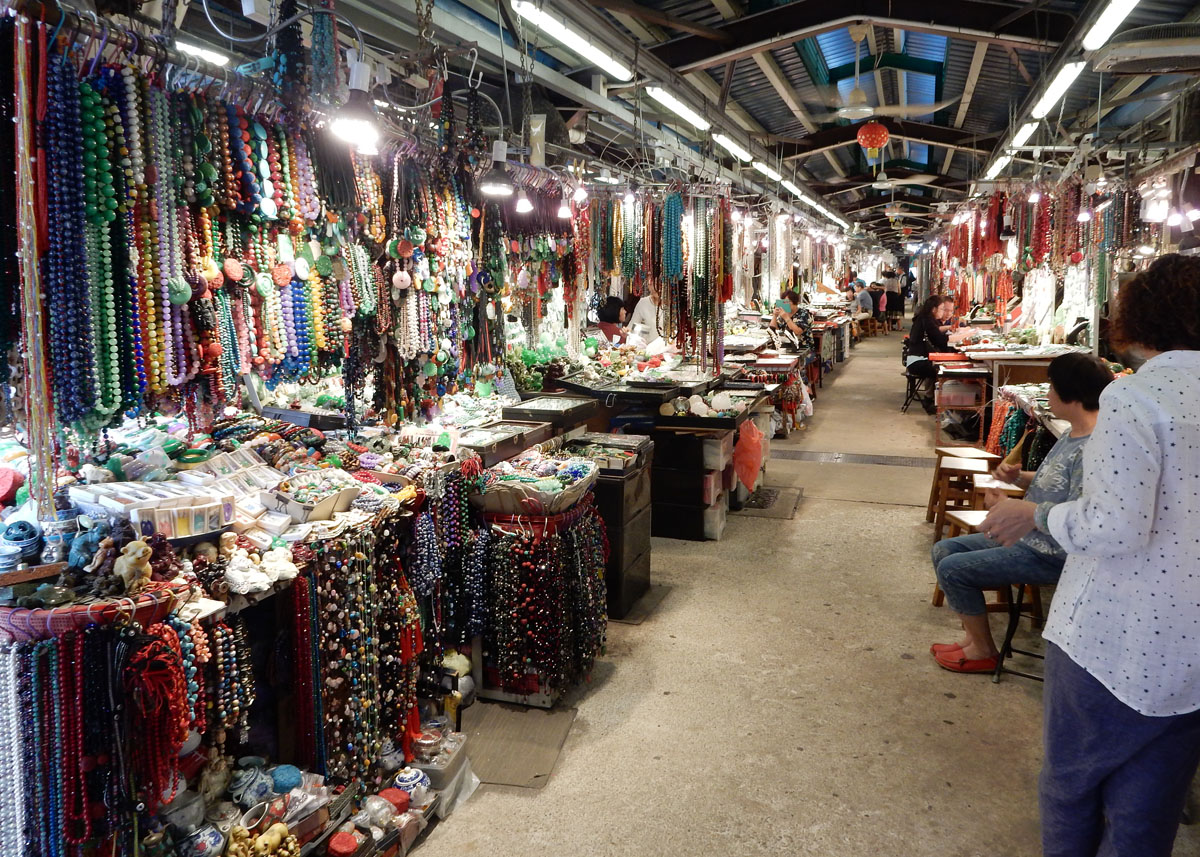 |
|||
| Close to the Police Station at Yau Ma Tei we find the famous Jade Market, which is held in a very large shed under a traffic flyover! | |||
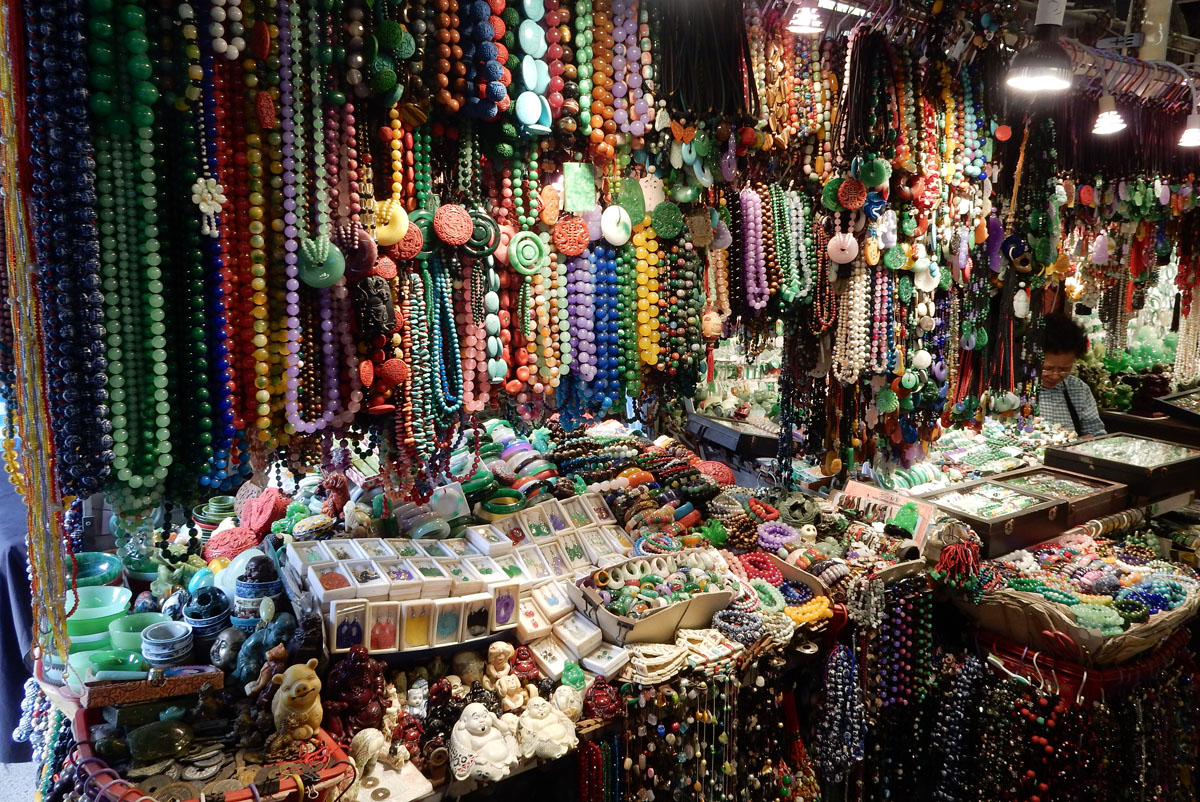 |
|||
| Items for sale in the Jade Market. | |||
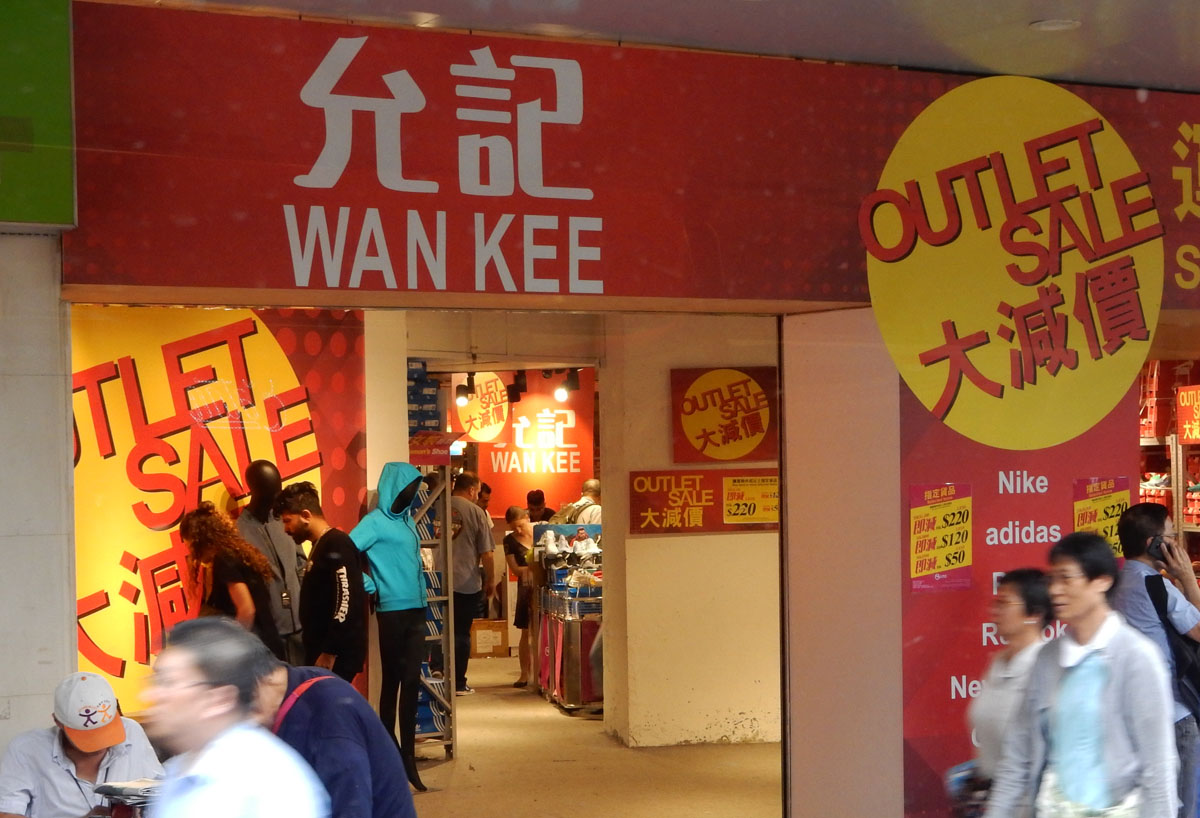 |
|||
| I am not sure, but I was told that the Wan Kee shop on Nathan Road, not far from the Jade Market, was owned by the Shong Kee Brothers. | |||
 |
|||
| This is an excellent example of how an old colonial structure can be repurposed and preserved for posterity. It is the former Marine Police Headquarters in Tsim Sha Tsui, close to the Star Ferry Pier. It now contains up-market shops and a hotel.
In the early years of the British Colony, piracy was a serious problem. Some years before Hong Kong was established, a woman called Ching Shih became the leader of the pirates and she commanded a fleet of 600 ships and about 50,000 hardened pirates. They fought pitch battles against the Portuguese navy. Although the threat of piracy had been reduced, due in part to the victories of the Portuguese, the British were still faced with sporadic attacks from local pirates. The Marine Police were tasked with defending local shipping from such attacks. |
|||
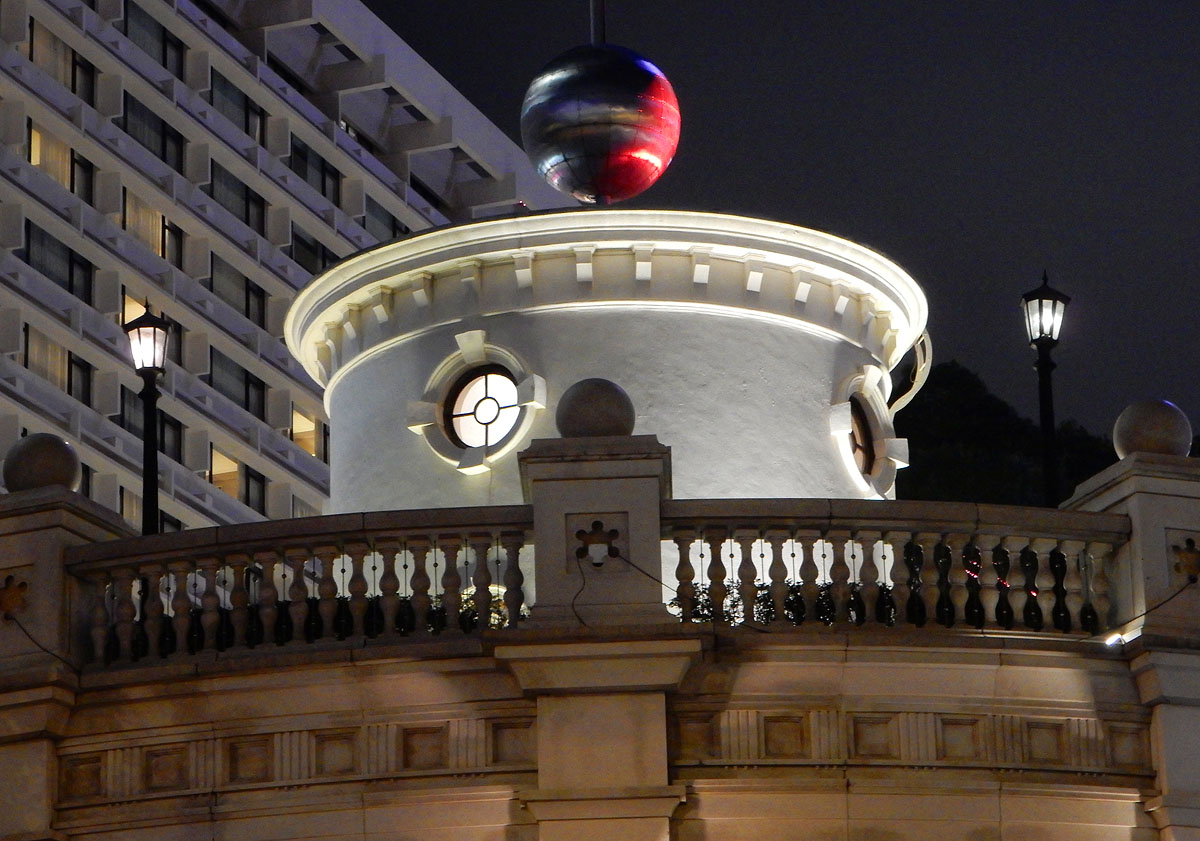 |
|||||
| Next to the former Marine Police Compound there is the old Signal Tower, often known as the Round House.
Up until 1907 the Time Ball (highlighted in red in the photo) would be raised high and then swiftly lowered precisely at Noon. Before 1907, the Signal Tower would have been visible to most ships anchored in the harbour. The Noon Day Gun would have been fired at the same time to give ships' navigators the precise time to check their chronometers. Back in the day before GPS and Satellite Navigation, ships would need accurate time to calculate Longitude. |
I learnt all about this antique longitude/latitude stuff way back in the early 1960s, when I was the navigator on a 28 foot ketch, sailing in the very last Trans Tasman Ocean Yatch Race between Auckland, New Zealand, and Sydney Australia. We came last in that race because we had the slowest boat, not because I was a lousy navigator. I happened to be congratulated as one of the most accurate navigators in that small fleet. So there! Pity our cruising ketch, the "Shiralee", was so darn slow.
Mind you, because we were a young crew of six who were rank amateurs, with minimal sailing experience, we ended up getting much more publicity in the press than the rich man who won the race, on a yatch called "Solo". That really pissed that rich man off, much to our proletarian delight! It took his Solo just 7 days to sail from Auckland to Sydney. It took our Shiralee 15 days. |
||||
 |
||||||
| This heritage building was constructed in 1902 and housed the Kowloon British School. It was later renamed the Central British School, when it was relocated to Ho Man TIn.
A few years after the Second World War, it was once again renamed, this time as the King George V School (KGV). My brother and I were in the very first intake of students enrolled in that school in 1946, when it was reopened after the War, and when it was still called the Central British School. This building now houses the Antiquities and Monuments Office. It is located at 136 Nathan Road, opposite what is now Kowloon Park. |
In 1900, a sum of $15,000 to finance the building of the Kowloon British School was donated by Sir Robert Hotung (1862 - 1956).
Sir Robert was a fascinating man. He was born Robert Ho Tung Bosman. His father was of Dutch Jewish ancestry and his mother was Chinese, who came from what is now Shenzhen. Although Sir Robert was Eurasian, he considered himself to be Chinese, and often dressed accordingly. By the age of 35, he was regarded as the richest man in Hong Kong. He was renowned for his philanthropy, and had donated generously for education, medicine and the arts. I was very lucky to meet him in the late 1940s, when he must have been in his 80s. My brother was a very talented pianist and he had been invited to play at a soiree hosted by Sir Robert. I tagged along as the younger brother. I had learnt to play the violin, and, although I was a truly lousy violinist, I did learn how to read music, so my job at that soiree was to turn the pages of the music score for my brother. I recall that on that occasion, Sir Robert wore a traditional Chinese costume and he looked very distinguished. |
|||||
 |
|||
| These steps lead up to the former Kowloon British School from Nathan Road. | |||
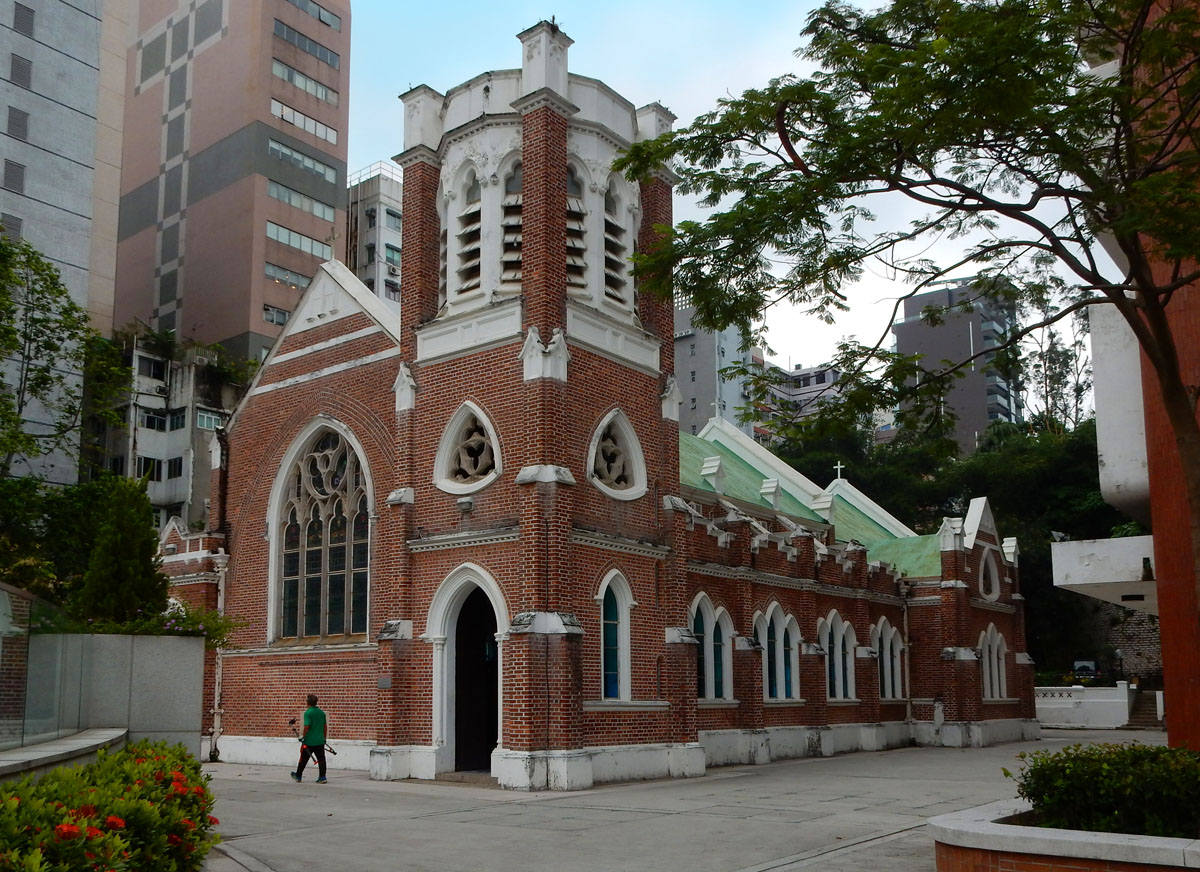 |
|||||
| Right next door to the former Kowloon British School is St Andrew's Anglican Church. It is the oldest English speaking Protestant church in Kowloon.
Another great philanthropist, Sir Catchick Paul Chater (1846 - 1926), made a donation of HK$35,000 which allowed the Church to be completed in 1906. One interesting bit of its history reveals that during the Second World War, when Hong Kong was occupied by the Japanese, the Church building was under serious threat of demolition, until it was briefly turned into a Shinto Shrine! That saved it from the scrap heap. |
Sir Paul Chater was another outstanding early pioneer in Hong Kong. He was an Armenian who was born in Calcutta, India. He moved to Hong Kong in 1864. WIth the help of the Sassoon family, he began to trade in gold bullion and land.
Some people I know may be horrified to discover that Sir Paul secretly took soundings of Hong Kong harbour at night in a sampan, and he was thus involved in the very earliest land reclamation schemes in the Crown Colony. He also built in Hong Kong one of the earliest electric power stations in the world. His Hong Kong Electric Company started business in 1890. He was a keen cricketer and he loved horse racing. Apparently, he never missed the weekly races in Happy Valley in 60 years! |
||||
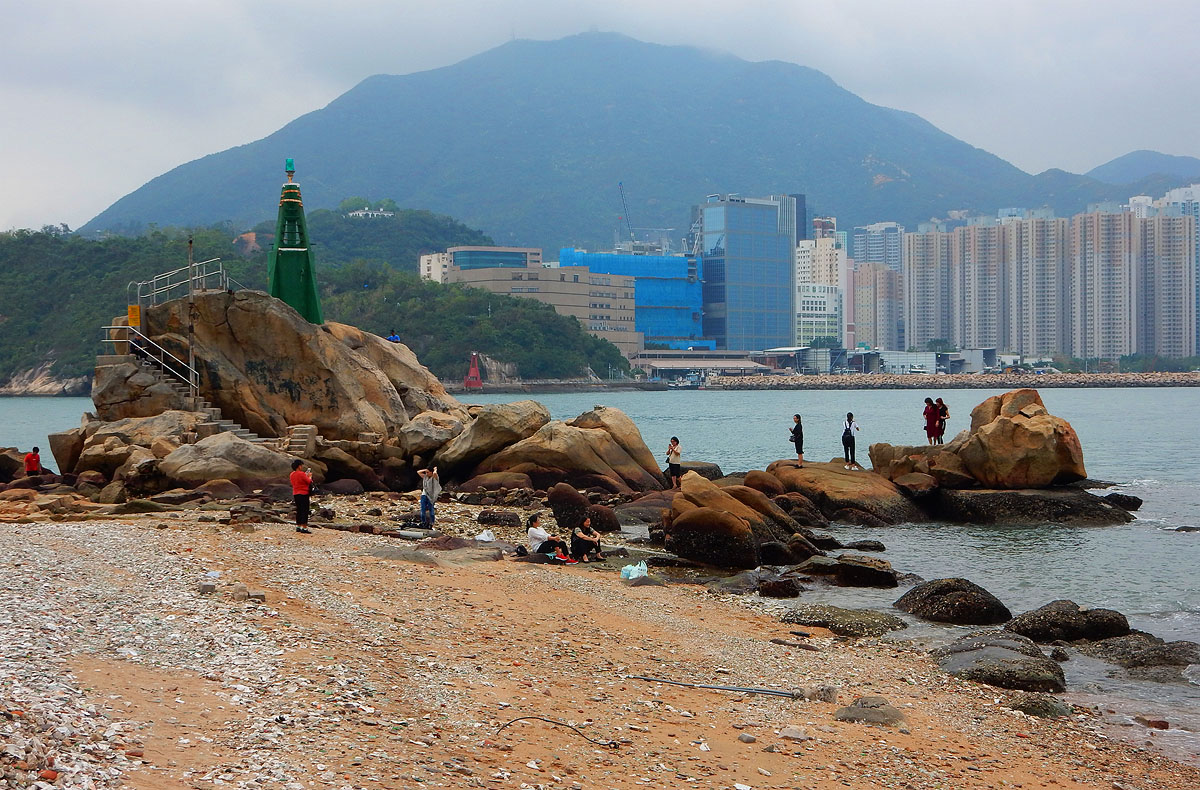 |
|||
| After the surprise aerial attack on Pearl Harbour on the 7th December, 1941, Hong Kong was the site of the very first battle on land to be fought in the Pacific War between the Empire of Japan and the Allies. The battle of Hong Kong began at 8 AM on the 8th December, 1941.
This photo show the Lye Mun Passage. It is the narrowest gap between Hong Kong Island and Kowloon, and it was here that the Japanese forces crossed over to the Island on the 18th December, 1941. |
|||
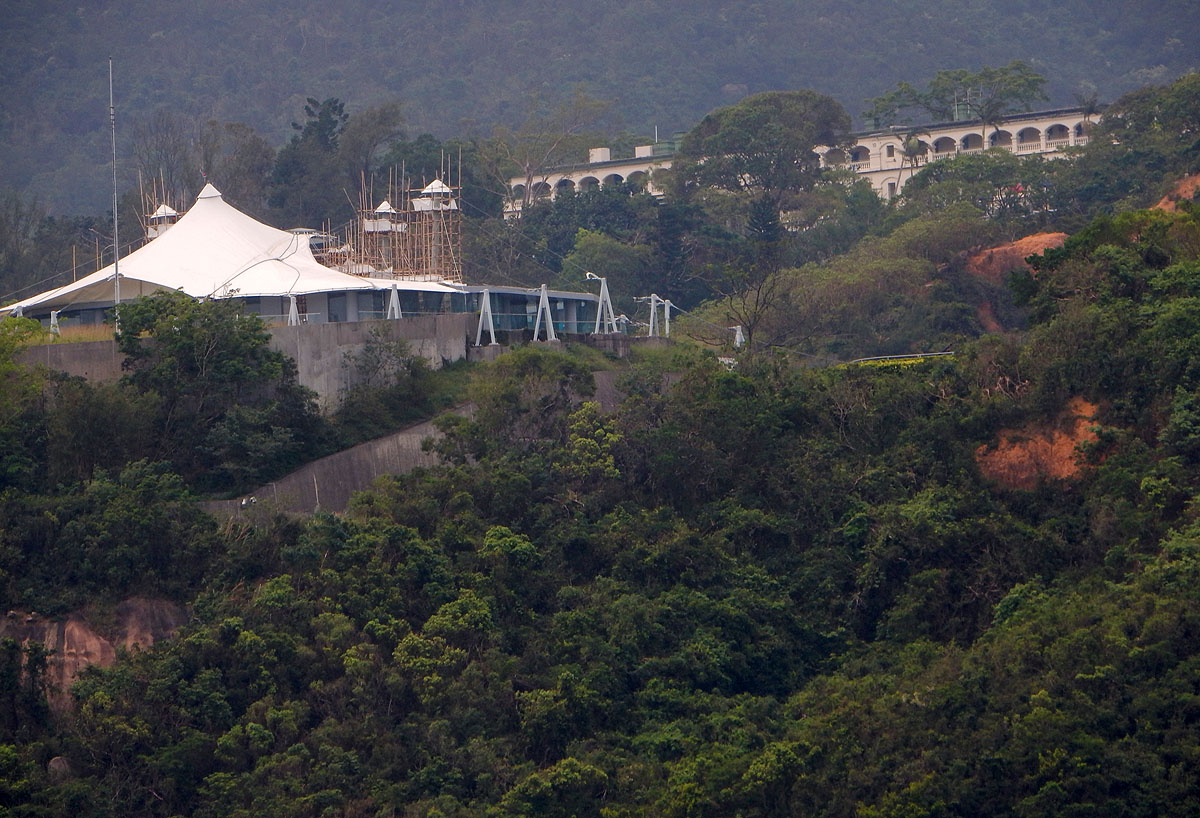 |
|||
| This is a shot taken from the Kowloon side of the Lye Mun Passage of the Hong Kong Museum of Coastal Defence, on Hong Kong Island, near Shau Kei Wan. You can see that it was badly damaged during the last typhoon in September, 2018. Much of the canvas roof had been demolished.
Behind the museum, the long white building with the verandah arches is the old Lye Mun Barracks. I am told that those barracks witnessed some atrocities during the invasion of Hong Kong. |
|||
 |
|||
| The Kowloon side of Lye Mun Passage has remarkably preserved its old Chinese village feel. It has become famous as the site of a number of excellent sea food restaurants. It is now a favoured destination for dedicated foodies. | |||
 |
|||
| This is one of the old Chinese villages at Lye Mun on the Kowloon side. | |||
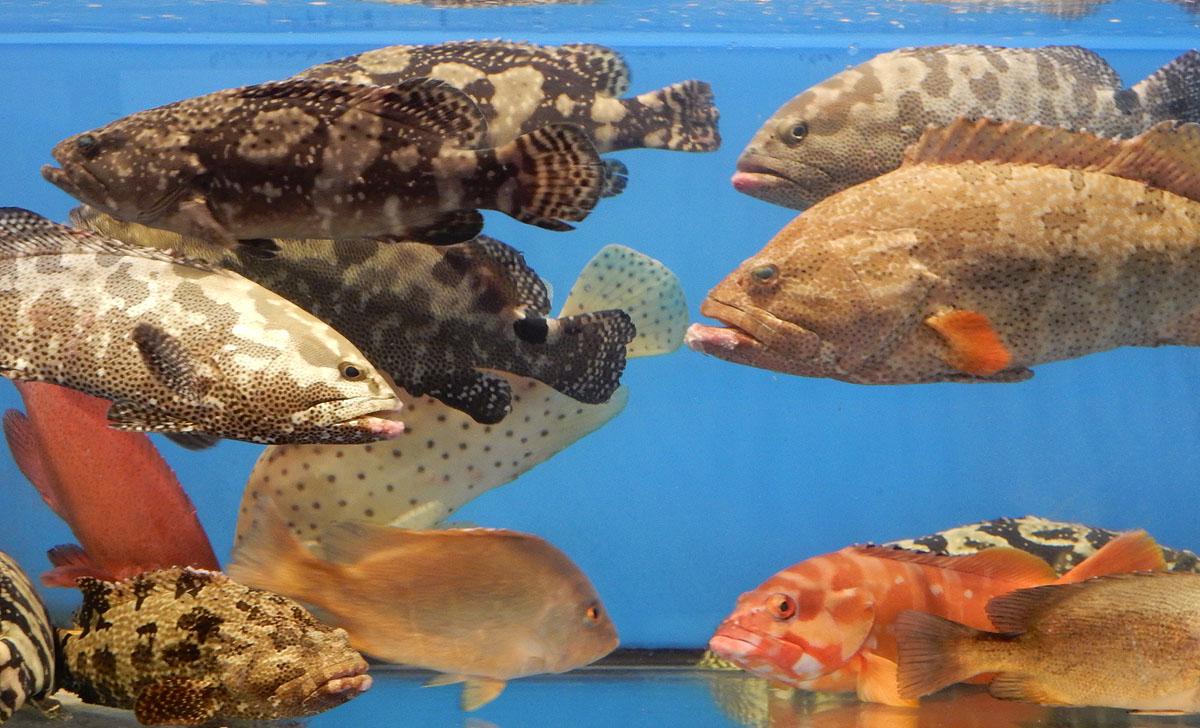 |
|||
| A fish tank in one of the villages at Lye Mun. The local Chinese insist that their seafood should be ultra fresh! | |||
 |
|||
| In the foothills of Tai Mo Shan Mountain, not far from the Tsuen Wan MTR station, there are two places which are definitely worth exploring. The first is the Yuen Yuen Institute. It was established in 1950 by monks from Guangzhou and is dedicated to all three major Chinese religions: Taoism, Buddhism and Confucianism.
The main building, shown above, is a replica of the Temple of Heaven in Beijing. I particularly like the two Chinese Lions guarding the insence holder. |
|||
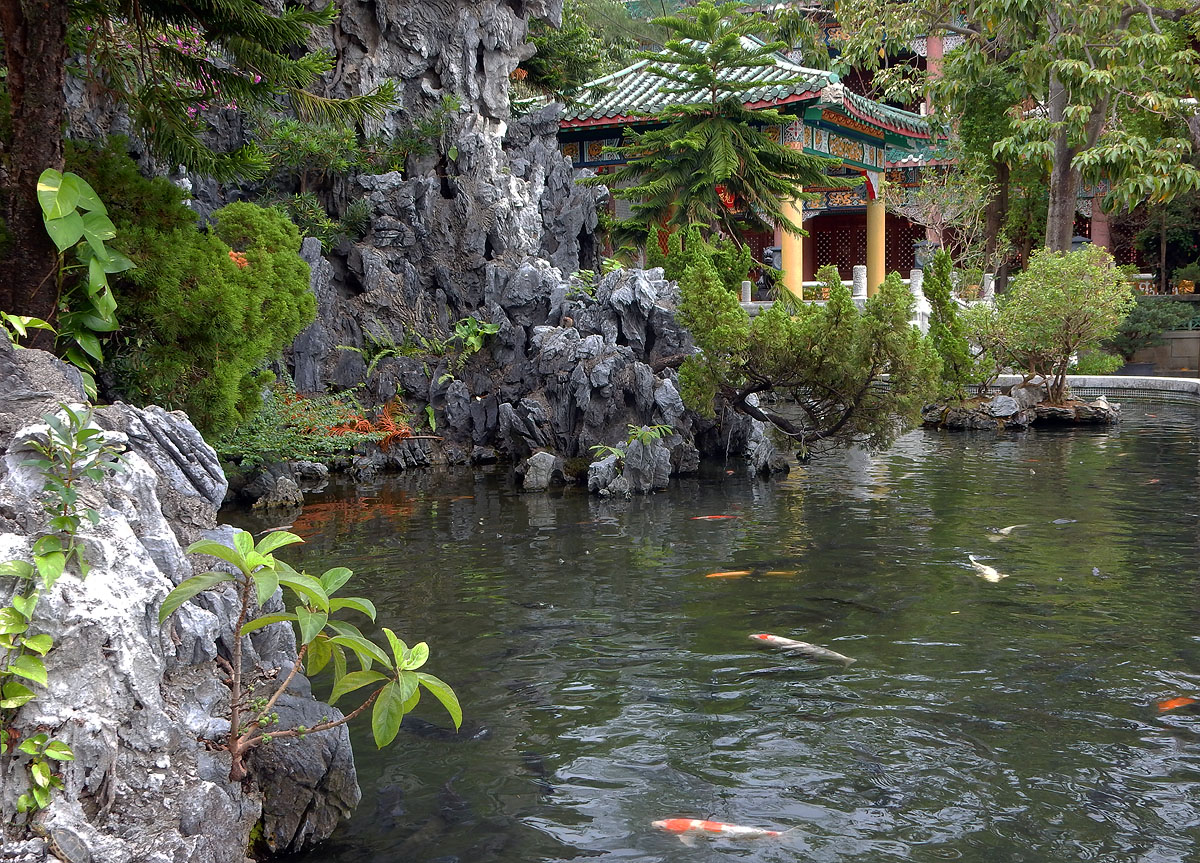 |
|||
| A rock garden and pool at the Yuen Yuen Institute. | |||
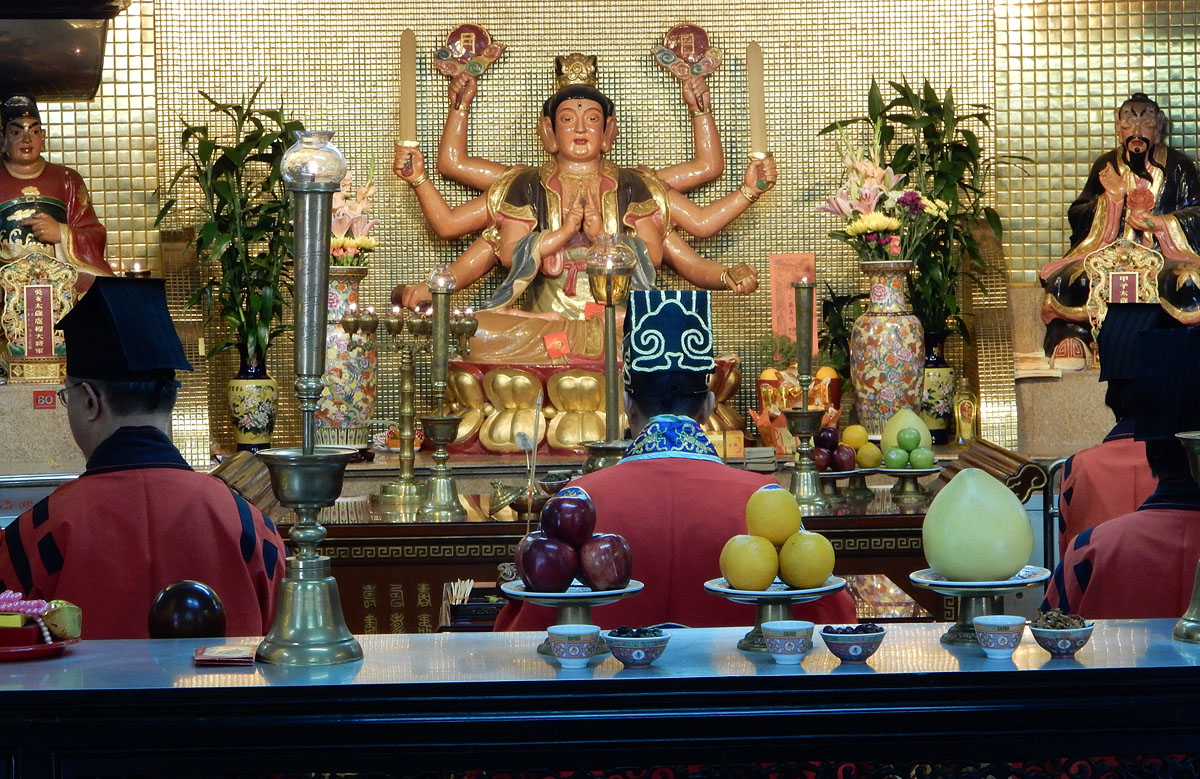 |
|||
| Monks chanting at one of the temples at the Yuen Yuen Institute. | |||
 |
|||
| Close to the Yuen Yuen Institute stands the Buddhist Western Monastery, which was built in the 1970s. It boasts a substantial 8 storey pagoda, lovely gardens and patios, and a host of statues. | |||
 |
|||
| This charming pavilion is in the Western Monastery at Tseun Wan. | |||
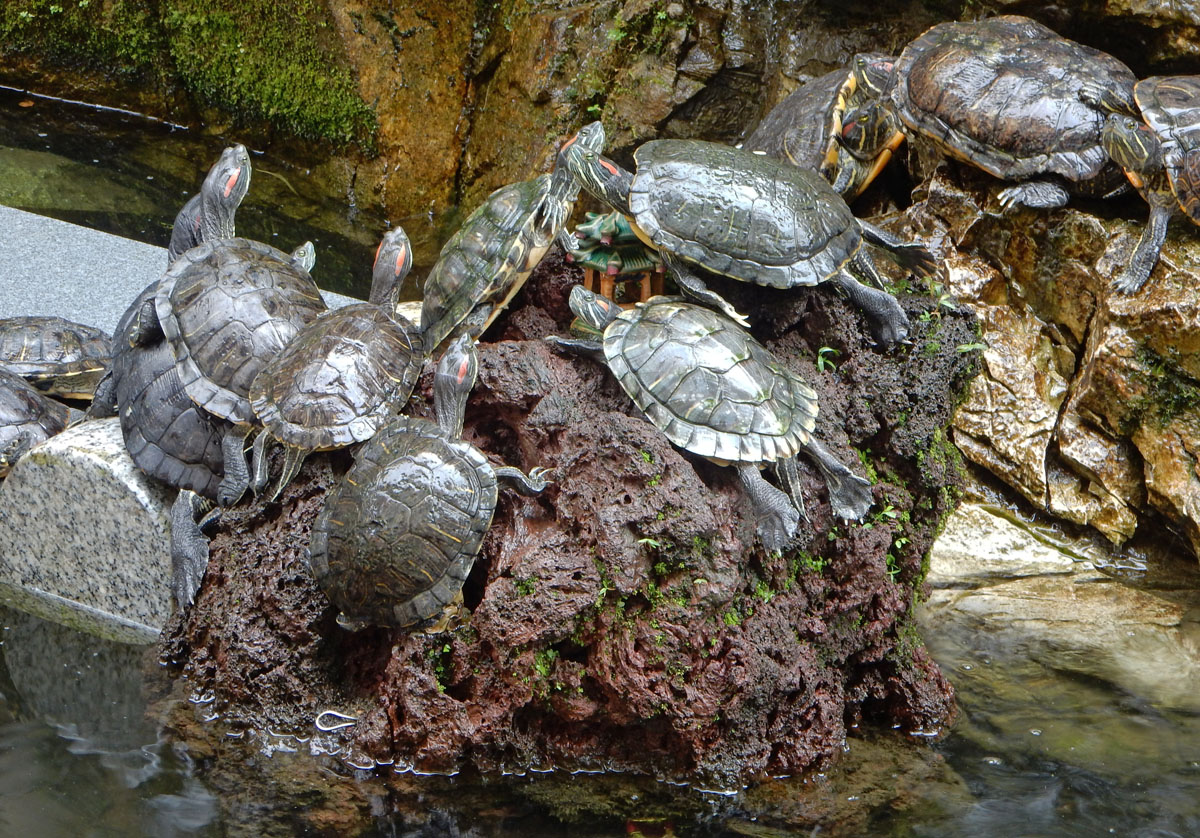 |
|||
| Turtles Galore, at the Western Monastery. | |||
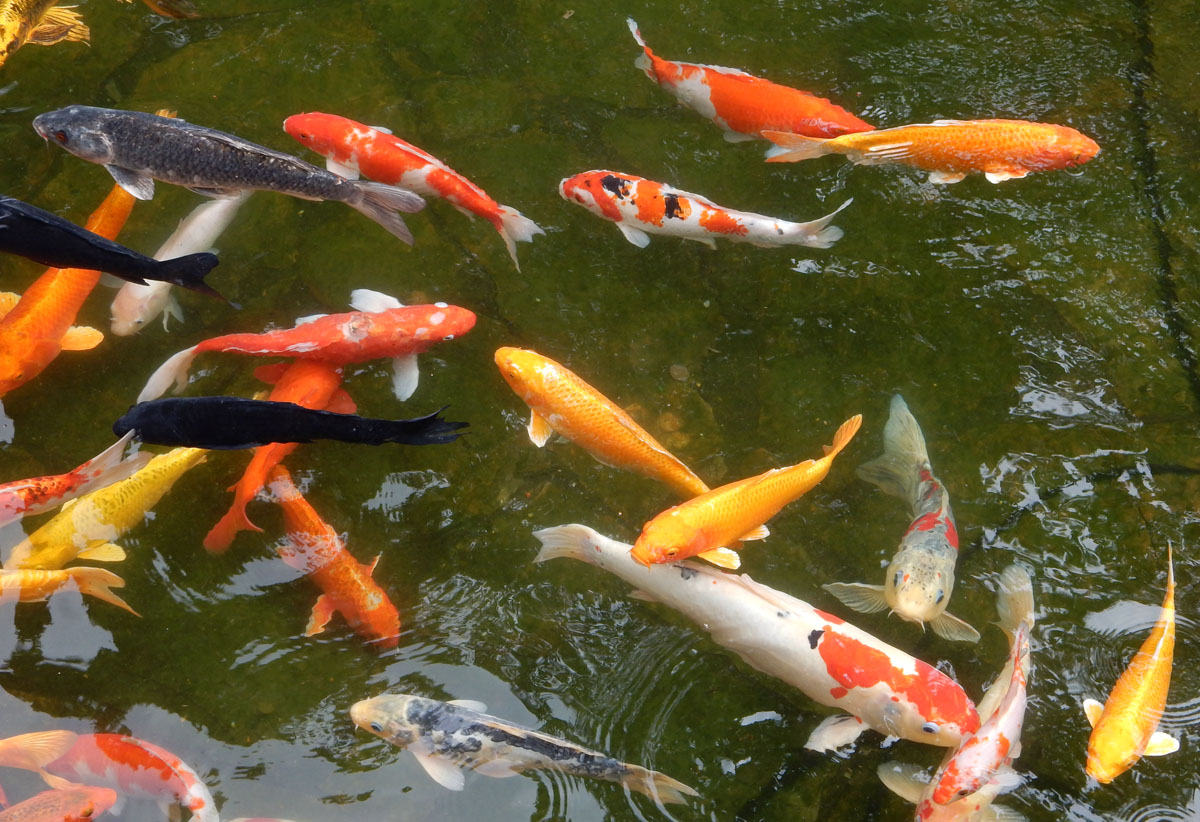 |
|||
| The ponds at the Western Monastery are well stocked with colourful fish. | |||
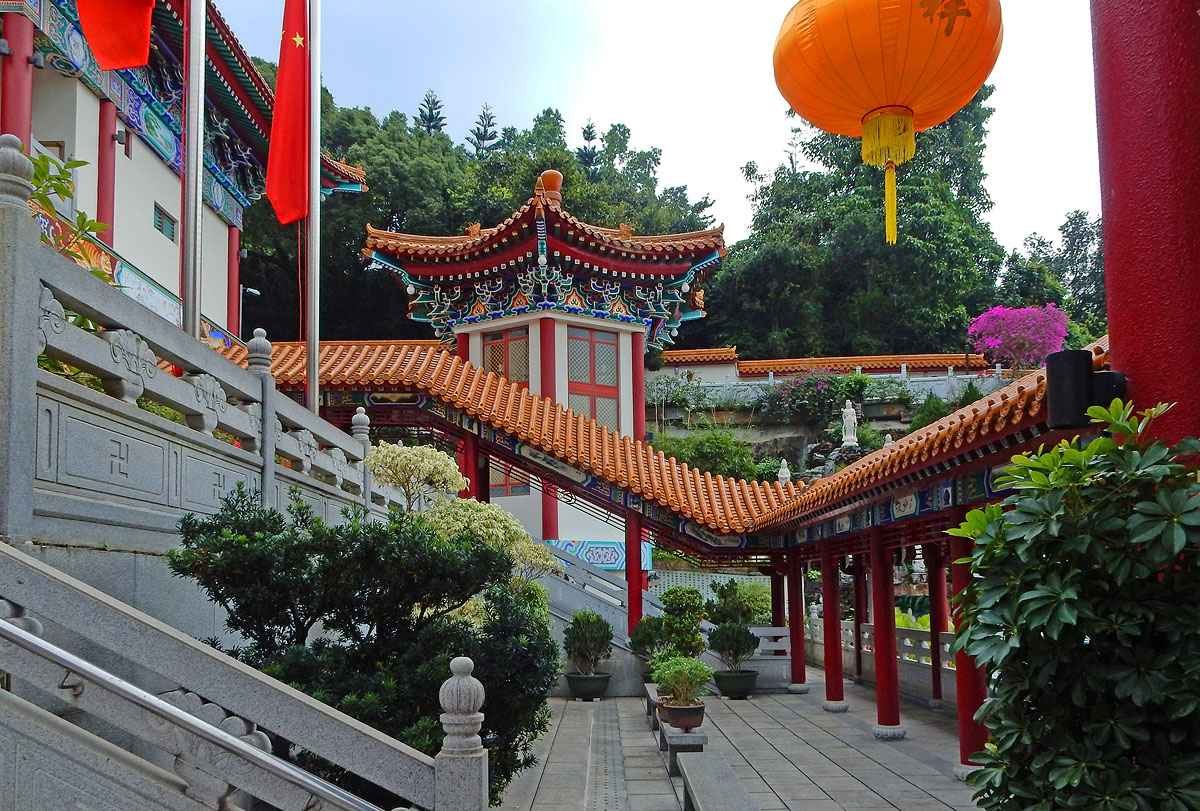 |
||
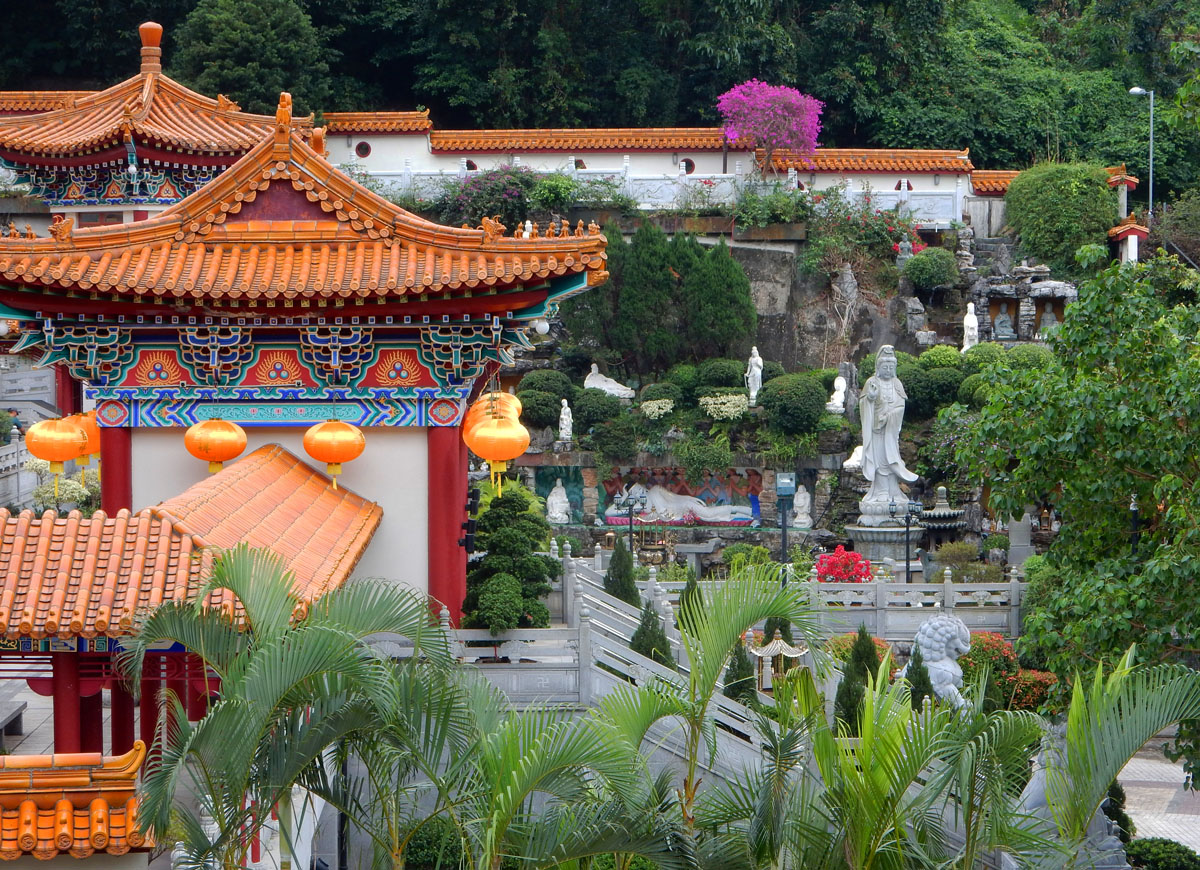 |
||
 |
|||
| A reclining Buddha at the Western Monastery. | |||
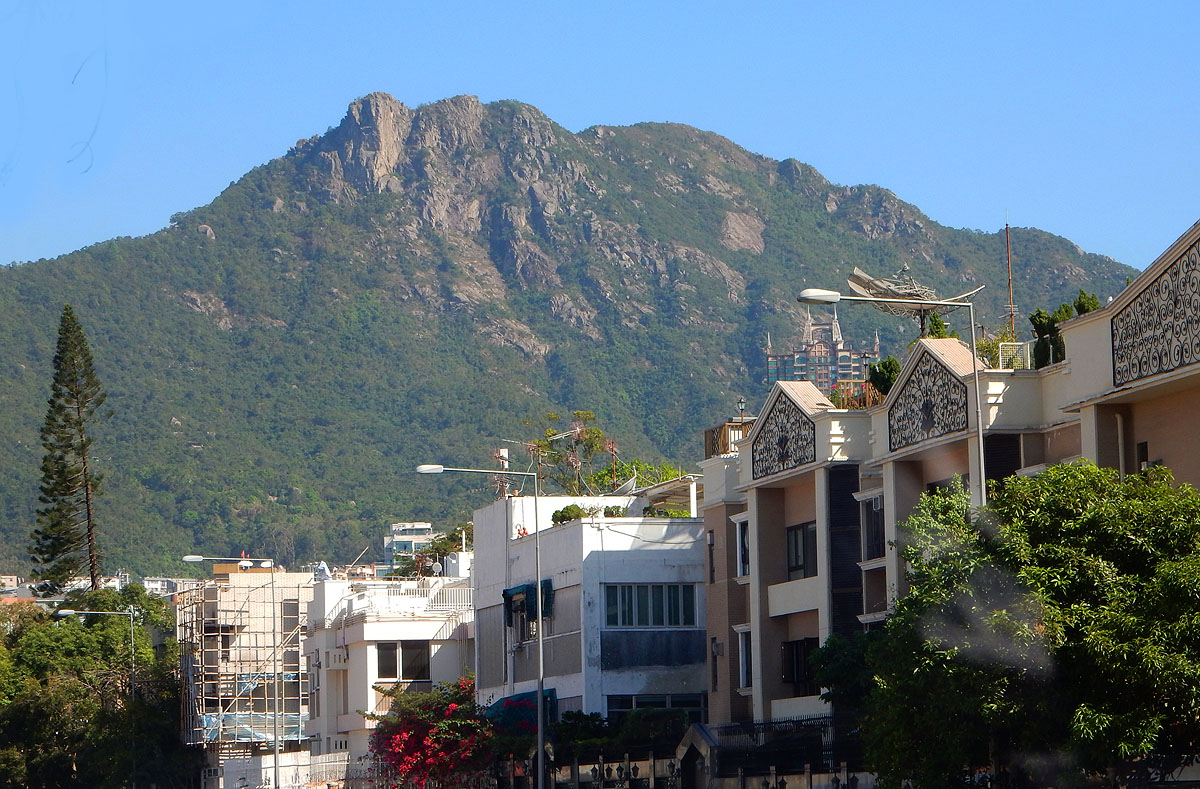 |
|||
| We end our relaxing amble through Kowloon with this shot of a local icon: Lions Rock. This Peak certainly bears a resemblance to a lion with a mane.
Kowloon derives its name from the ridge of mountains separating it from the New Territories. There are 9 peaks on that ridge and they are known as the Nine Dragons. In Chinese, these Nine Dragons are called Gow Loong (Kowloon). |
|||
|
To return to the Paintings section of this website, please CLICK HERE
|
|||